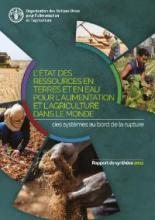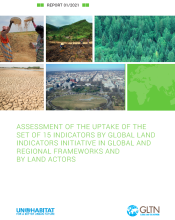Land Library Search
Through our robust search engine, you can search for any item of the over 73,000 highly curated resources in the Land Library.
If you would like to find an overview of what is possible, feel free to peruse the Search Guide.
/ library resources
Showing items 37 through 45 of 1818.In Cameroon, the pressure on wetlands, which cover nearly 70% of the national territory, appears to be increasing, whether for subsistence needs, firewood, grazing, logging or expansion of development projects.
In this introductory video to the Global Programme Responsible Land Policy answers are given to what it wants to achieve, how it works and why land rights are so important.
The decision to conduct a Sustainable Development Goals(SDGs) survey was reachedafter thecompletion of the2020 Voluntary National Review (VNR) for The Gambia.It was realized thatthecountry was able to reporton only 52%of SDG indicators.
La réponse à la demande accrue de produits alimentaires accentue la pression exercée au niveau mondial sur les ressources que sont les eaux, les terres et les sols.
This one-pager provides details on the LAND-at-scale project in Rwanda. This project is implemented by Kadaster International and IDLO, and financed by the Ministry of Foreign Affairs via the Netherlands Enterprise & Development Agency.
Indicator 15.1.2: Proportion of important sites for terrestrial and freshwater biodiversity that are covered by protected areas, by ecosystem type
This guidance document is designed to help Intergovernmental Forum on Mining, Minerals, Metals and Sustainable Development (IGF) member states implement the IGF Mining Policy Framework (MPF).
A lack of capacity in the land management and administration is a key reason that land policies are not effectively implemented in many countries and, indeed, is a reason that those policies are inappropriate or become outdated.
The Global Land Indicators Initiative (GLII) platform was established in 2012 through the joint effort of United Nations Human Settlements Programme (UN-Habitat), the World Bank and Millennium Challenge Corporation with the aim of making global-scale monitoring of land governance a reality by 202






